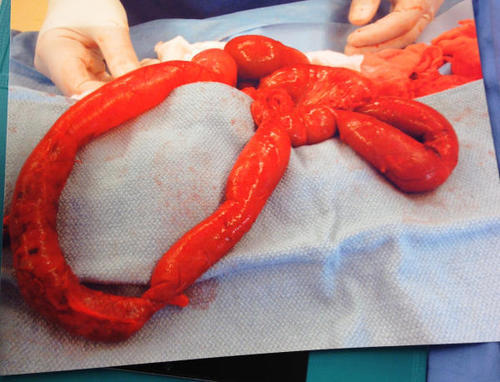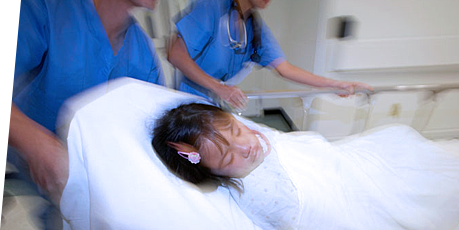Yesterday, a child was brought to your ED who looked bad and felt bad, to the point you are convinced she has peritonitis. If the abdominal exam is convincing enough, there is no need for diagnostic imaging It would only serve to add time and radiation to the equation.
If you had really insisted on getting something like a CT, I would have told you that it just showed nonspecific distension and a small amount of free fluid. Helpful, right? And that at the age of 34 she would develop lymphoma for no apparent reason.
Your surgery team takes this patient immediately to the OR and finds this:

So now my questions are:
- What is going on here? What is this?
- What is really going on here? What’s the problem?
Please Tweet and leave emails or comments with your guesses. Discussion and answers tomorrow!




